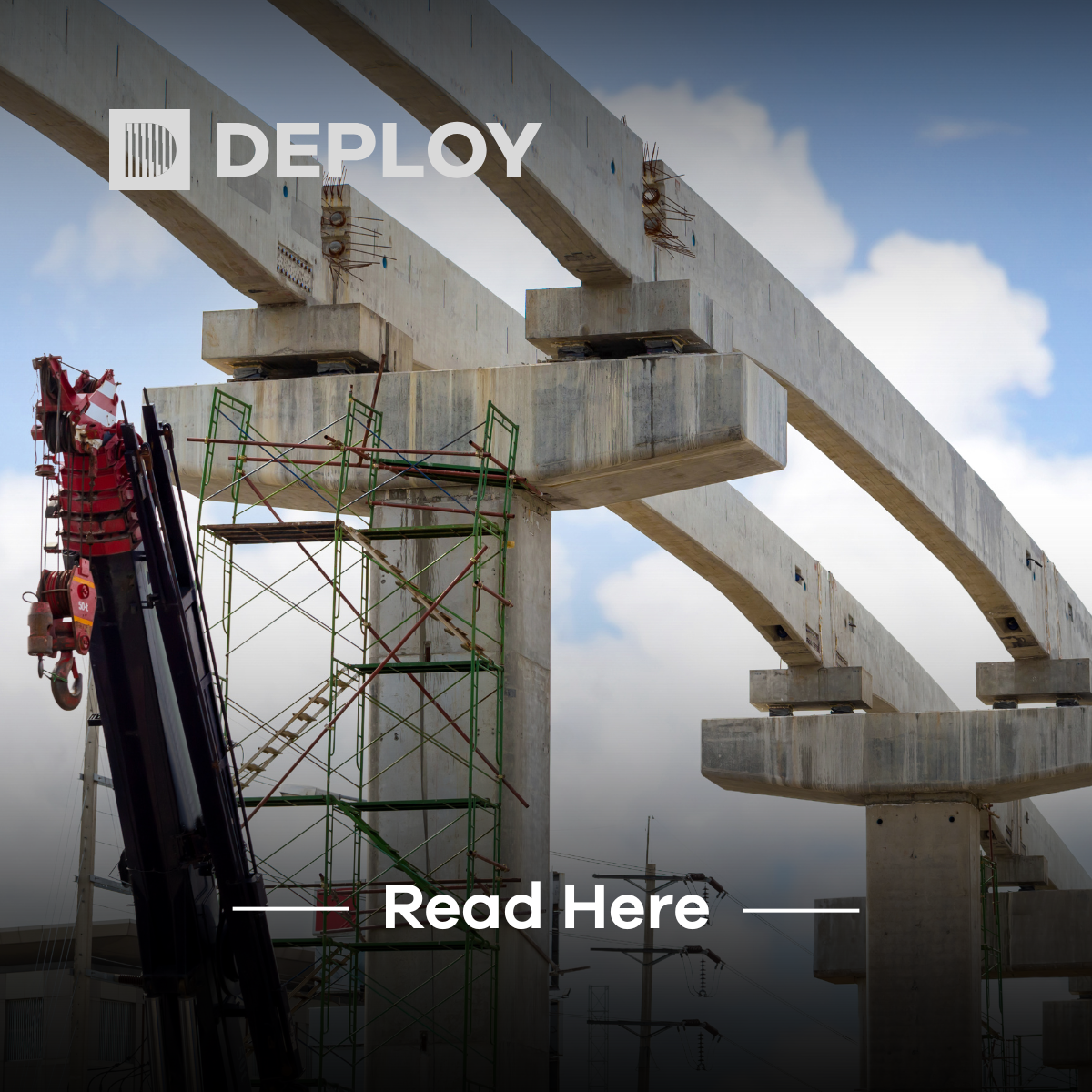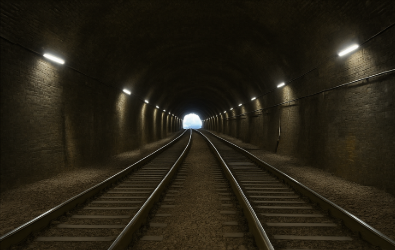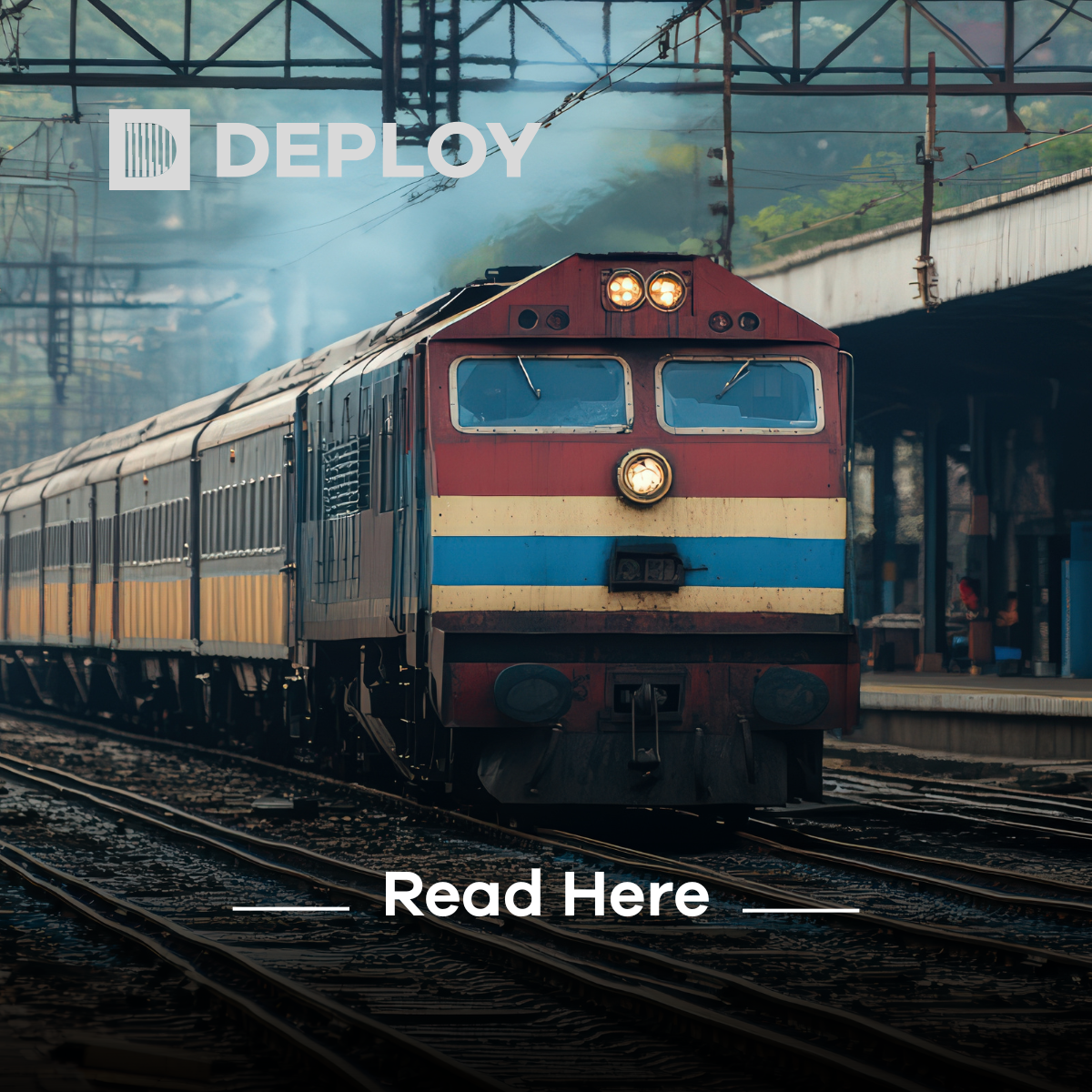
The rail industry plays a vital role in keeping the UK moving, carrying millions of passengers and large volumes of freight every day. With such responsibility, health and safety must always come first. At Deploy, we know that protecting workers and the public is essential, and we work closely with clients and candidates to make sure the highest standards are met. Why Safety Matters in Rail Rail environments can be dangerous. Work often takes place close to moving trains, heavy machinery, and high-voltage systems. Without strong safety practices, accidents can happen quickly. By focusing on health and safety, we not only protect people but also keep projects running smoothly and avoid costly delays. The industry is closely regulated by the Health and Safety at Work Act 1974 and overseen by the Office of Rail and Road (ORR) . For everyone involved in rail projects, compliance is not optional – it is the foundation of safe and successful work. Common Risks for Rail Workers Rail staff face unique risks, such as: Trackside hazards – working close to trains, signalling systems, and restricted areas. Electrical dangers – overhead lines and third-rail systems that carry high voltage. Manual handling – lifting heavy equipment and repetitive tasks. Fatigue – long or irregular shifts, including night work. Environmental factors – exposure to weather, noise, and dust. Best Practices for Safer Rail Work Good safety is about making safe choices every day. Some key practices include: Proper training – making sure everyone has the right qualifications, such as PTS, COSS, or OLE. Risk assessments – reviewing conditions before and during shifts. Managing fatigue – ensuring fair rosters, regular breaks, and welfare facilities. Clear communication – daily briefings, safety updates, and easy reporting of near misses. Protective equipment – correct and well-maintained PPE for every role. Deploy’s Approach to Safety At Deploy, we treat safety as part of our culture, not just a requirement. We make sure every candidate we place is trained, qualified, and fully compliant before starting work. Our compliance team checks certifications, medicals, and training records to keep standards high. By placing safety at the heart of our recruitment, we help protect lives, support our clients, and keep the rail industry moving forward.
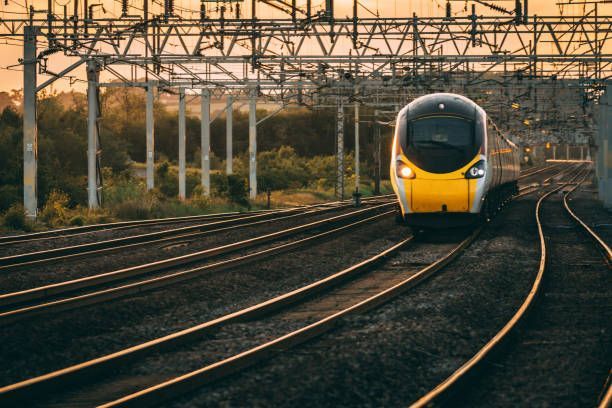
In the rail industry, safety isn’t just a requirement – it’s a culture. Every worker on-site plays a vital role in ensuring that projects run smoothly and that everyone goes home safely at the end of the day. One of the most important practices in maintaining this culture is making close calls . At Deploy Recruit, we specialise in rail recruitment and connecting skilled professionals with opportunities across the industry. We know that close calls are not only about preventing accidents, but also about creating a safer, more proactive workplace.
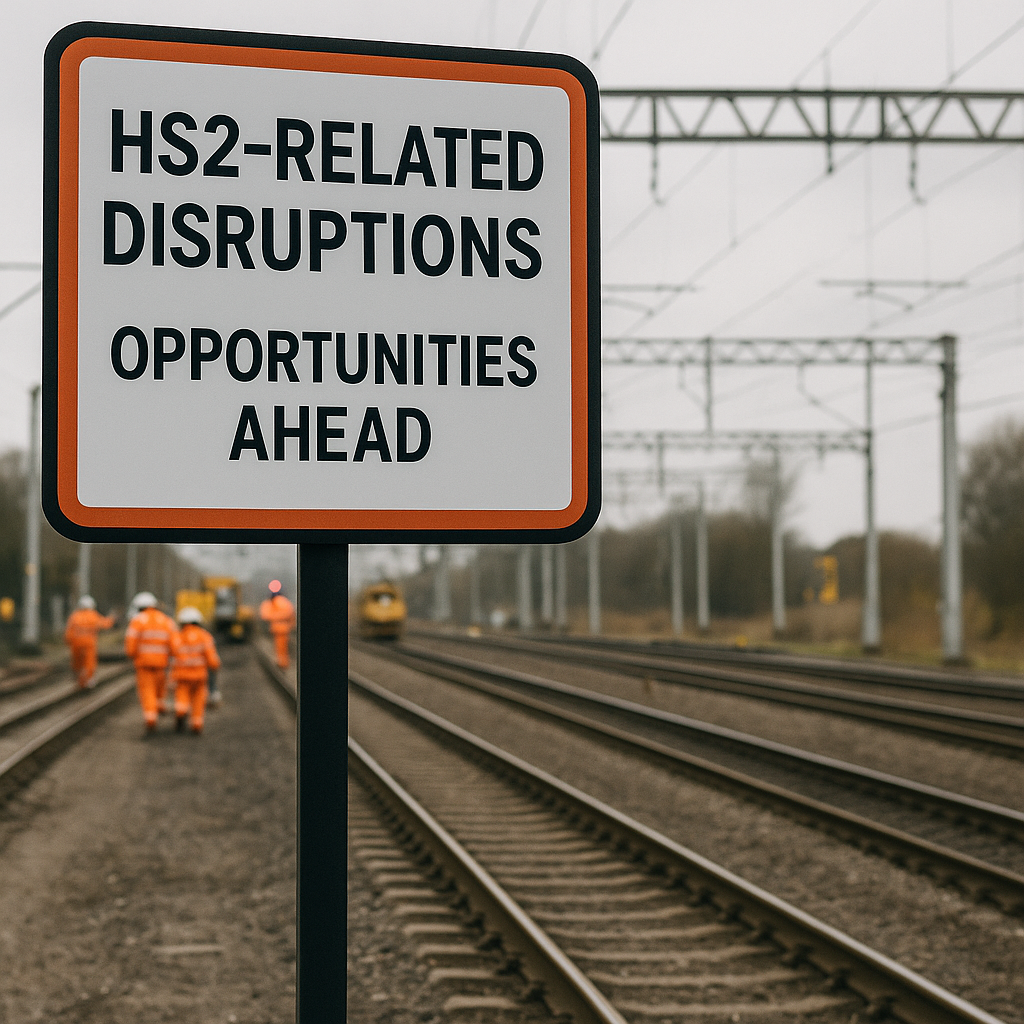
The HS2 project remains one of the most ambitious infrastructure programmes the UK has ever undertaken. But alongside the promise of faster journeys and stronger regional connectivity comes a reality many in our sector are already feeling—years of disruption across vital parts of the rail network, particularly in and around Southern England.

UK infrastructure is facing a talent crisis. With a projected £750 billion investment over the next decade in areas such as rail, energy, roads, and flood defences, the pressure on skilled professionals from engineers to site supervisors has never been greater. Yet despite record funding, without strategic workforce planning, these bold ambitions may falter at the execution stage. Labour shortages are already causing average project delays of three to six months, with nearly 61 percent of engineering employers struggling to find candidates with the right expertise. The root cause is clear: infrastructure delivery is talent-intensive. Workforce scarcity directly translates to higher costs, fragmented schedules, and diminished quality. With nearly 40,000 vacancies in construction and engineering roles ranging from welders to high-voltage specialists and a wave of retirements ahead, the capacity to deliver complex schemes is being eroded. Even robust governance frameworks, such as those outlined in the IPA’s ‘Construction Playbook’, hinge on deeper succession and capability planning elements that cannot be ignored. Consider the A9 dualling project in Scotland or the Thames Tideway Tunnel in London, both critical infrastructure schemes that have been repeatedly delayed. The A9 upgrade was postponed from 2025 to 2035, partly due to shortages of civil engineers and project managers. And the Tideway Tunnel, a £4.2 billion sewer project, encountered setbacks when specialist technicians became unavailable. These cases illustrate the stark reality: even well-funded, high-profile projects stagnate when the right people aren't in place. That is where strategic workforce planning comes in. It’s about more than hiring; it’s proactive: predicting demand, developing talent pipelines, and deploying teams before crises emerge. Organisations must understand which skills are needed, when, and in what quantities, ensuring every phase from initial design to commissioning is staffed with fully competent professionals. At Deploy, we specialise in embedding that strategic foresight into your talent strategy. Our consultants create end-to-end workforce roadmaps aligned with project timelines and skill requirements. Through talent forecasting, succession planning, and targeted sourcing, we help clients access hard-to-find engineers, technicians, project controllers, and site leads, and keep those roles filled through to delivery. For example, we recently worked with an energy network operator facing a shortage of high-voltage engineers ahead of a major substation upgrade. By identifying the skill gap 12 months before project start, deploying bespoke training partnerships, and sourcing both experienced hires and apprentices, we secured a full complement of experts, avoiding costly delays. The future of UK infrastructure depends on two interlinked pillars: capital and capability. Funding alone will not deliver HS2 extensions, renewable energy deployments, or 1.5 million new homes. But with strategic workforce planning, supported by partners like Deploy, organisations can bridge the technical talent gap and build projects with resilience from day one. If you’re preparing for your next infrastructure milestone, talk to Deploy. We’ll help you forecast talent needs, secure specialist hires, and strengthen your delivery capability, ensuring your projects not only start but also finish successfully.

The establishment of the National Infrastructure and Service Transformation Authority (NISTA) in April 2025 marks a watershed moment for the UK’s infrastructure and construction sectors. Born from the merger of the National Infrastructure Commission and the Infrastructure and Projects Authority, NISTA unites long-term strategic planning with hands-on delivery oversight, reshaping the very mechanics of how we forecast, develop, and deploy talent across major engineering, rail, energy, and construction programmes. In practice, NISTA is not simply a new governing body; it represents a unified vision of infrastructure delivery that directly influences talent forecasting. By publishing a credible project pipeline and enforcing consistent standards across disciplines, NISTA enables more accurate anticipation of workforce needs. Civil and mechanical engineers, project and programme managers, site labourers, and specialised delivery leads can now be sourced proactively rather than reactively, smoothing the peaks and troughs that previously plagued large-scale infrastructure hubs. But NISTA’s ambitions go beyond number crunching. With its Teal Book guidance and expert Advisory Council in place, the focus on cross-sector collaboration now includes workforce capability as a core pillar of project success. For instance, delivering the government’s 1.5 million homes commitment or upgrading energy and transport networks will demand not only integrated technical teams but leaders and workers who can collaborate across digital, civic, and environmental domains. In one early pilot, NISTA engaged with a consortium delivering a new hospital campus in the North West. Rather than staffing each speciality independently, the authority required a combined workforce plan from clients and contractors. This included mechanical engineers integrating with digital systems specialists to ensure building management systems were seamlessly embedded. The result was a team that delivered faster timelines and smoother handovers, with fewer errors and greater project coherence, an early proof of the power of strategic workforce alignment. This is precisely where Deploy steps in. We understand that NISTA has redefined the rules of talent engagement in infrastructure delivery. That’s why our approach blends forward‑looking talent mapping, skills forecasting, and cross-disciplinary placement. We don’t just find candidates, we build integrated project teams informed by NISTA‑driven expectations. Whether sourcing transport engineers for a rail upgrade or assembling multi‑skilled crews for a digital public‑service rollout, our strategy aligns with the authority’s pipeline, accentuating resilience, compliance, and delivery-readiness. For our clients, this means fewer firefighting hires and more confident hires. Deploy works with engineering firms, energy suppliers, and public‑sector shapers to secure project personnel who are not only technically adept but primed for multidisciplinary teamwork, compliance, and long‑term delivery cycles. We help organisations align with NISTA’s vision of integrated planning and execution, translating strategic intent into operational capability. With NISTA now shaping the infrastructure horizon, the lens on project delivery has irrevocably shifted. Talent planning must be strategic, cross-functional, and future-proofed from day one. At Deploy, we’re ready to help you navigate this new era: delivering the professionals, the teams, and the expertise required to meet NISTA’s high bar on time, on budget, and built to last. Get in touch today to ensure your talent pipeline is as well-structured as the infrastructure you deliver.

A growing concern among UK infrastructure leaders is the so-called “Northern brain drain,” a trend where skilled engineers and construction professionals are increasingly drawn to mega-projects in the South, particularly in the Golden Triangle of London, Oxford, and Cambridge. Northern mayors and MPs have raised alarms as billions of pounds in public and private investment are concentrated in the South, prompting fears that major northern initiatives may struggle to find the skilled workforce they urgently need. This drift of talent matters deeply. Rail links, manufacturing plants, and energy projects in regions such as Greater Manchester, Liverpool, and Newcastle depend on a steady flow of qualified professionals, including mechanical engineers, project managers, civil construction experts, and digital infrastructure specialists. Without them, even the most well-funded schemes risk costly delays or quality compromises. A Public Accounts Committee report recently warned that the UK’s £800bn major projects pipeline is already under pressure due to a shortage of skilled workers crucial for delivery. The reality isn’t hypothetical. Guardian reports have cited a slump in northern engineering applications, while universities and regional bodies highlight graduates relocating south after securing work on high-profile builds. Economic research confirms that London retains over 84% of graduates, compared to much lower retention in northern towns, an ominous sign for regional talent sustainability. In this climate, securing northern infrastructure depends on more than static recruitment; it requires creative, place-based workforce planning. Northern authorities are calling for devolved talent strategies, improved connectivity, and strong public/private partnerships to retain and grow skills locally. This approach ensures runways, rail lines, and clean-energy hubs are supported by the workforce they require, without being hollowed out by southern draw. At Deploy, we understand that regional talent gaps don’t close themselves. That’s why our approach prioritises partnership with companies and local institutions in northern England. We help shape recruitment strategies that align stage-by-stage with project milestones, ensuring talent pipelines in engineering and construction are active, diverse, and rooted in place. From assessing local graduate output to sourcing experienced contractors willing to relocate or work regionally, we work to stem the flow south and strengthen the skills base north. Whether it’s activating return-to-work incentives, supporting flexible working models, or facilitating regional mobility hubs, Deploy offers targeted solutions that keep talent close to the projects that matter. Our specialist teams bring deep knowledge of northern markets, connections with universities and councils, and a track record of delivering skilled placements on vital regional infrastructure. The Northern brain drain is a national challenge. But with thoughtful, locally led talent strategies and the right recruitment partner in place, it’s one we can overcome. At Deploy, we stand ready to help northern projects secure the talent they deserve today, tomorrow, and for decades to come.


